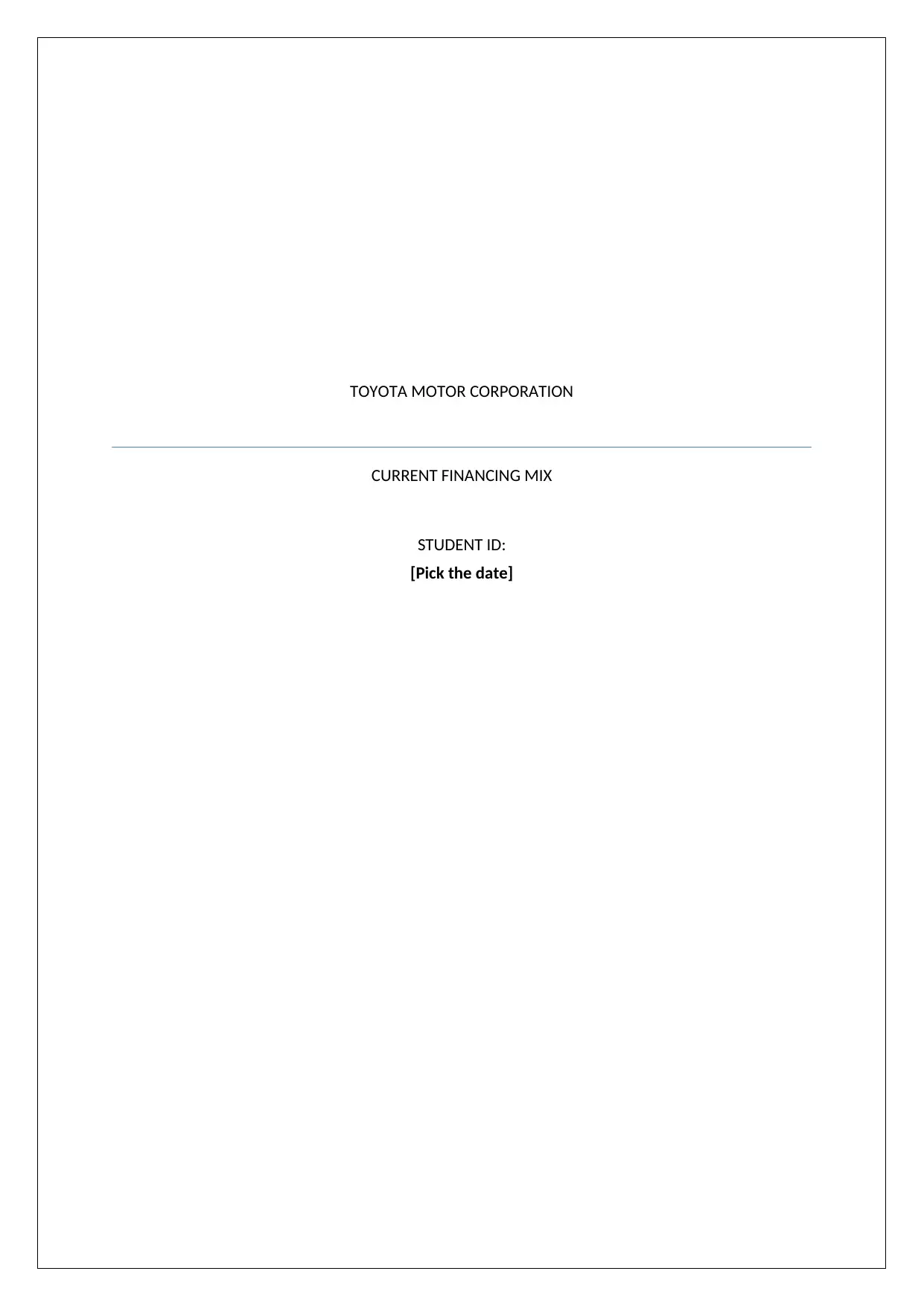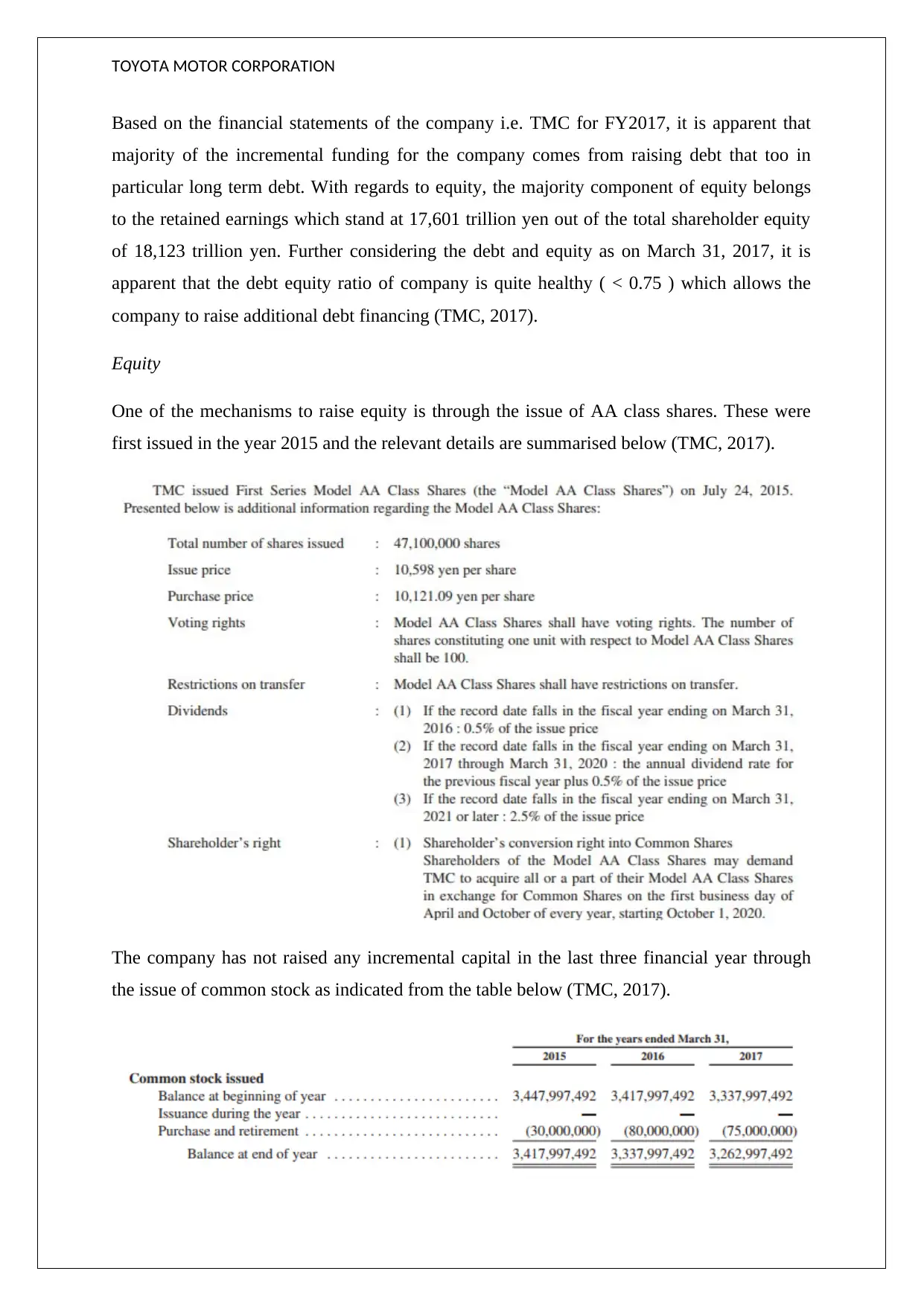Toyota Motor Corporation: Debt and Equity Financing Analysis - FY2017
VerifiedAdded on 2020/03/02
|5
|495
|74
Report
AI Summary
This report provides a financial analysis of Toyota Motor Corporation (TMC) based on its FY2017 financial statements. The analysis focuses on the company's financing mix, specifically examining its debt and equity structure. The report highlights that the majority of TMC's incremental funding comes from long-term debt, while equity is primarily composed of retained earnings. The debt-to-equity ratio is considered healthy, allowing for further debt financing. The report also details the sources of equity, including AA class shares and treasury stock, though the issuance of common stock is limited. It further breaks down the components of short-term and long-term debt, including unsecured and secured loans, notes, and capital lease obligations, along with the currency breakdown of long-term debt and the expected maturity schedule. The analysis relies on data from TMC's SEC filings and website.
1 out of 5












![[object Object]](/_next/static/media/star-bottom.7253800d.svg)